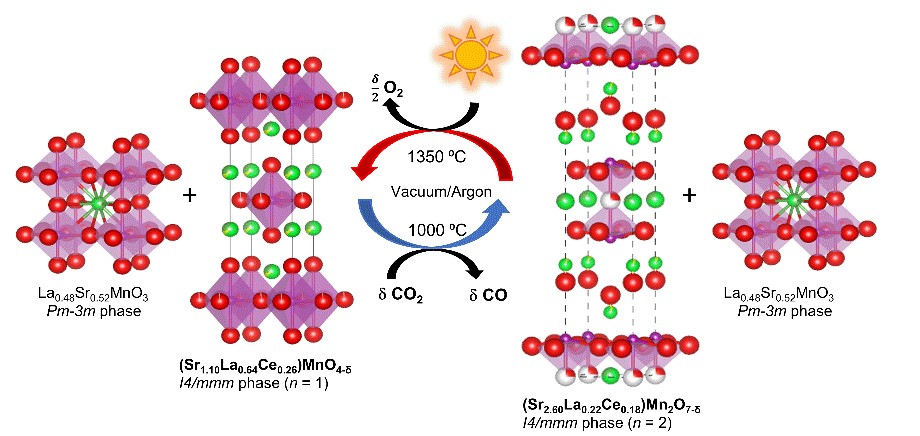Solar Thermochemical Materials
The generation of solar fuels from renewable resources such as water and CO2 is a global mission that can be directly addressed with solar thermolysis. This project is a long-standing collaboration with the group of Prof. Aldo Steinfeld as a world-leading team in solar reactor design. The Steinfeld group presented the first demonstration ever of the entire process chain from ambient air and concentrated sunlight to liquid hydrocarbon fuels by operating a solar mini-refinery at ETH Zurich, which is now translated into pilot plants.
Our research collaboration is focused on the exploration of new materials for two-step solar thermochemical (STC) redox splitting of CO2 and H2O to generate clean syngas. The predominant material that drives the high temperature (ca. 1773 K) redox processes in STC reactors is non-stoichiometric ceria.

Advanced Energy Materials (2021): 2003532
We first explored ceria performance enhancement through tetravalent dopants and observed impressive CO yields through the introduction of ca. 10% Hf (J. Phys. Chem. C 2013, 117, 24104). We then proceeded with an extensive study of eligible dopants all over the PSE and established clear criteria for the ideal dopant radius along with productive dopant-induced vacancy formation in ceria (J. Mater. Chem. A 2017 (5) 19901). In-depth investigations into the scalability and long-term stability of so selected dopants clearly identified Hf(IV), Zr(IV), and Nb(V) as optimal co-doping agents for ceria (J. Mater. Chem. A 2018 (6) 5807).
Recently, we came forward with the first Ce-substituted lanthanum strontium manganite perovskite composite (LSC25M75) that combines the best of ceria and perovskites as a newly explored materials class for STC. LSC25M75 outperformed current perovskite materials in CO2 reduction. The mechanisms behind its high CO2 conversion extent were for the first time identified with a combination of in situ high-temperature neutron, synchrotron, and electron diffraction experiments. This paves the way to new types of tunable and resilient cross-over composite materials for STC (Advanced Energy Materials (2021): 2003532).
